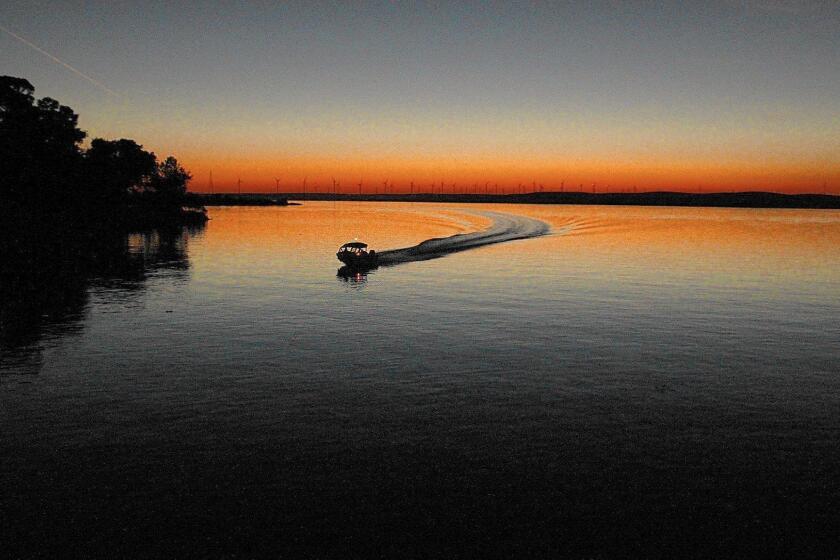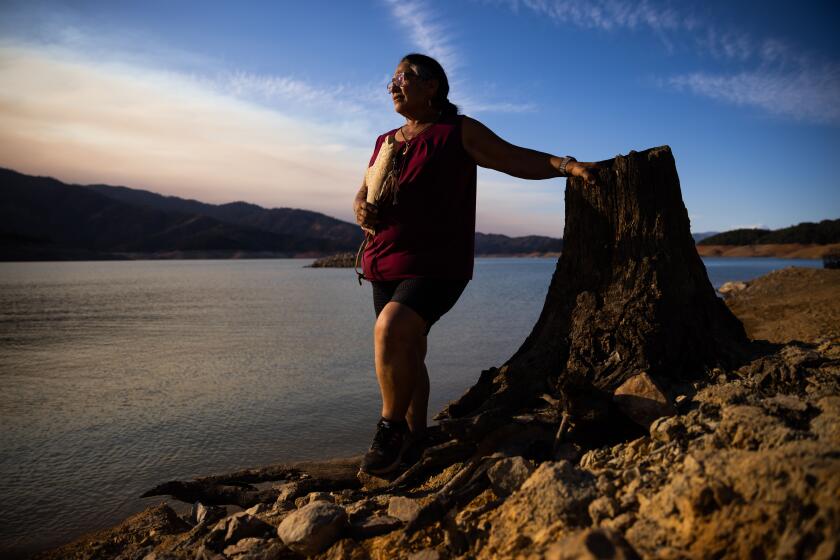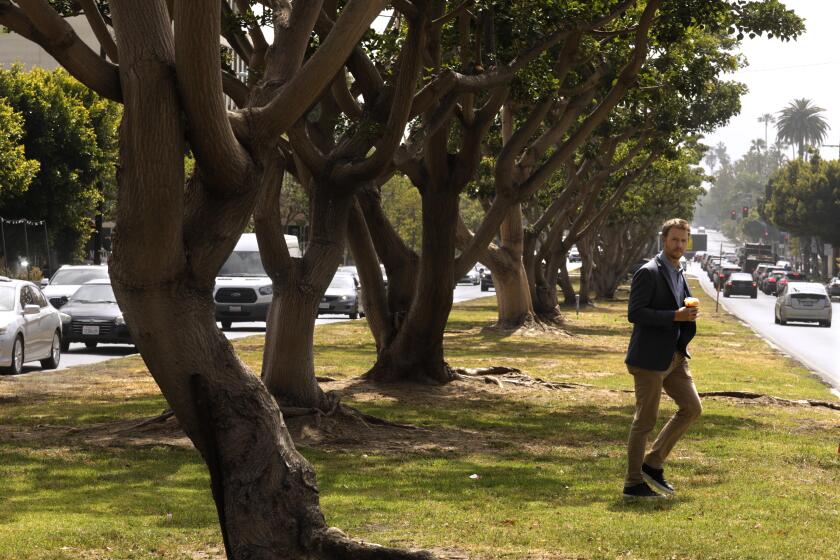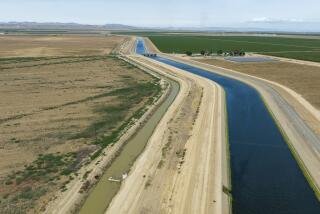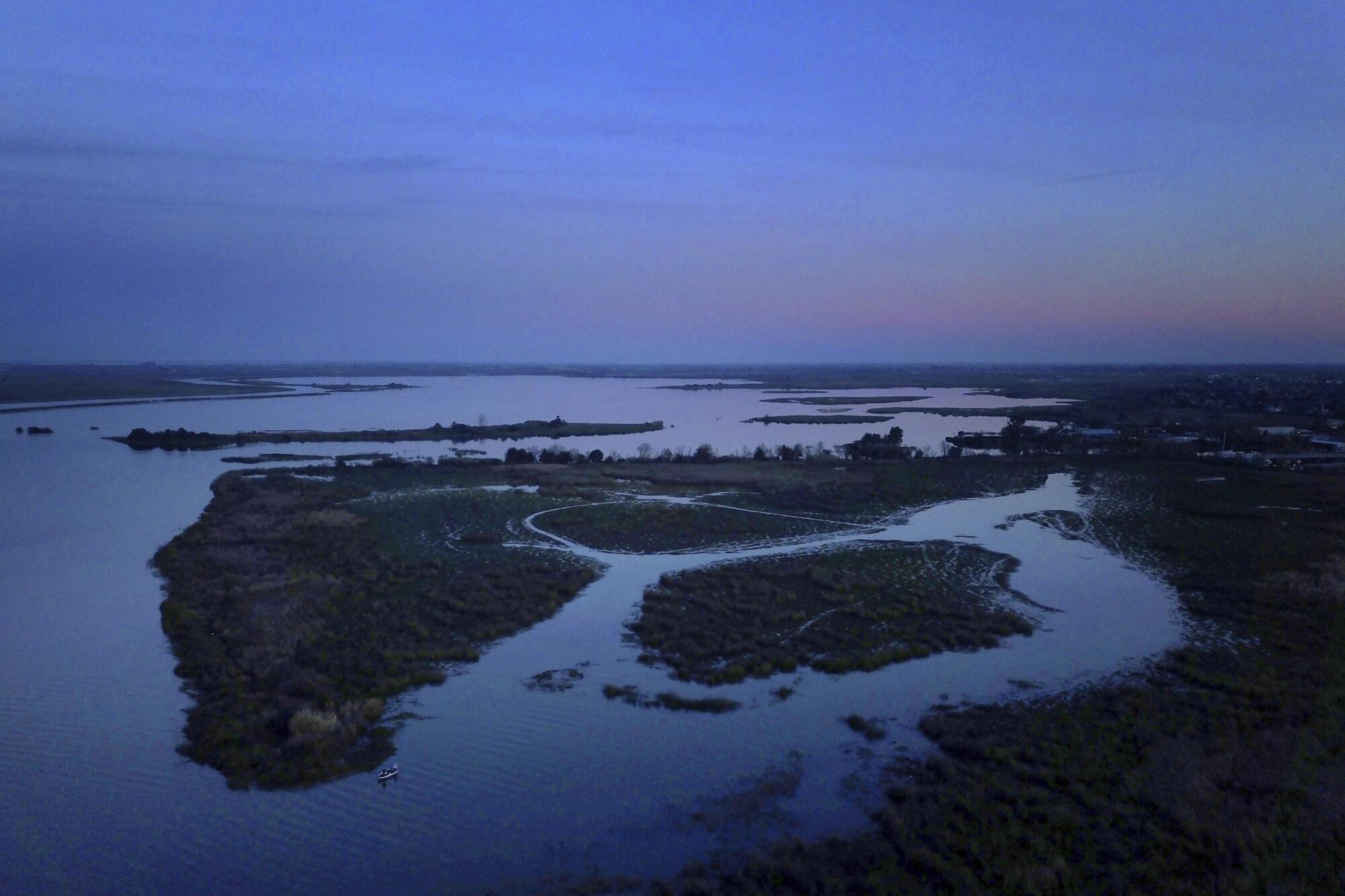
- Share via
California water regulators have released a long-awaited analysis of options for managing flows in the Sacramento-San Joaquin River Delta, where fish populations have been declining and the ecosystem has been deteriorating.
The delta is the central hub of the state’s water system, drawing together rivers from a vast watershed and supplying pumps that send water flowing to cities and farms.
The draft report from the State Water Resources Control Board’s staff lays out alternatives for new water quality standards that will determine how much water may be taken out, and how much should be allowed to flow through the delta.
Aggressive and impactful reporting on climate change, the environment, health and science.
Some of the options would limit users’ water withdrawals to maintain certain flows in the delta at one of three potential threshold levels.
Another alternative is generating heated debate: It would rely on negotiated agreements, with water agencies pledging to forgo certain amounts of water while also funding projects to improve wetland habitats.
Major water suppliers have lined up to support these “voluntary agreements,” which Gov. Gavin Newsom and his administration have touted as a solution to break away from the traditional conflict-ridden regulatory approach and improve the delta’s ecological health.
Environmental advocates say they welcome the state’s analysis after years of delays, but they argue that the voluntary measures would be disastrous for threatened and endangered fish, including salmon, steelhead, green sturgeon and delta smelt.
“We’re just not going to get the water that the salmon need,” said Scott Artis, executive director of the Golden State Salmon Assn. “We will lose salmon runs and stocks — and species — if we don’t get water in our rivers.”
Environmental groups and tribes say the voluntary approach would reduce protections, and they want to see the board set flow requirements that would ensure sufficient amounts of water pass through the delta and into San Francisco Bay, and also take other measures to protect the deteriorating aquatic ecosystem.
The report’s release on Sept. 28 opened a process that will involve hearings, public input and an eventual decision by the State Water Board. The alternatives still could undergo revisions, and the board could decide to combine elements from different options.
The update of the Bay-Delta Water Quality Control Plan has been years in the making. The last substantial changes in water quality and flow requirements were adopted in 1995 for much of the watershed. In 2018, the State Water Board released new standards to increase flows in the San Joaquin River. The pending update will set rules for the Sacramento River watershed and the rest of the delta.
California officials are touting a $2.6-billion deal to boost the health of a vital watershed, but environmentalists are calling it a backroom scheme.
The report, which is more than 5,000 pages long, also outlines goals for managing cold-water releases from dams for fish.
“This is a major milestone. This is a consequential step in the process. But there’s a lot of work ahead of us,” said Eric Oppenheimer, the board’s chief deputy director.
The Newsom administration announced the voluntary agreements proposal in March. Water agencies say this approach would dedicate substantial water to the environment. They are pledging about $2.5 billion to support restoration projects on about 27,000 acres of floodplain habitat and hundreds of acres of aquatic habitat, as well as water purchases, a science program and other efforts.

“That is absolutely the path forward for our state, both for the ecosystem, its health and well-being in the delta and its watershed, and our water supply,” said Dave Eggerton, executive director of the Association of California Water Agencies, which represents about 460 agencies.
Managers of water agencies have said that recent declines of fish species in the delta, as well as decreasing reliability of water deliveries, indicate that the traditional regulatory approach hasn’t worked and won’t be effective as climate change increases strains on water supplies.
“We simply cannot waste time going down the same old paths at the cost of our water supply reliability,” Eggerton said. “We’re ready to do something better.”
California tribes and environmental groups argue state officials are violating civil rights by mismanaging water. The EPA is opening an investigation.
A coalition of water agencies supported the voluntary measures in a letter to the State Water Board, calling them “Agreements to Support Healthy Rivers and Landscapes” and saying they “will improve environmental conditions more quickly and holistically than traditional regulatory requirements, while providing more certainty to communities, farms, and businesses.”
In the Central Valley, Westlands Water District is one of the major agricultural suppliers supporting the agreements. The district delivers water to producers of almonds, pistachios, tomatoes and other crops.
“We are not going to have a reliable water supply of any sort if we don’t have a healthy, sustainable ecosystem,” said Allison Febbo, the district’s general manager. “And so we need to work together to figure out how to achieve that, with the goal of also maintaining our economy and communities.”
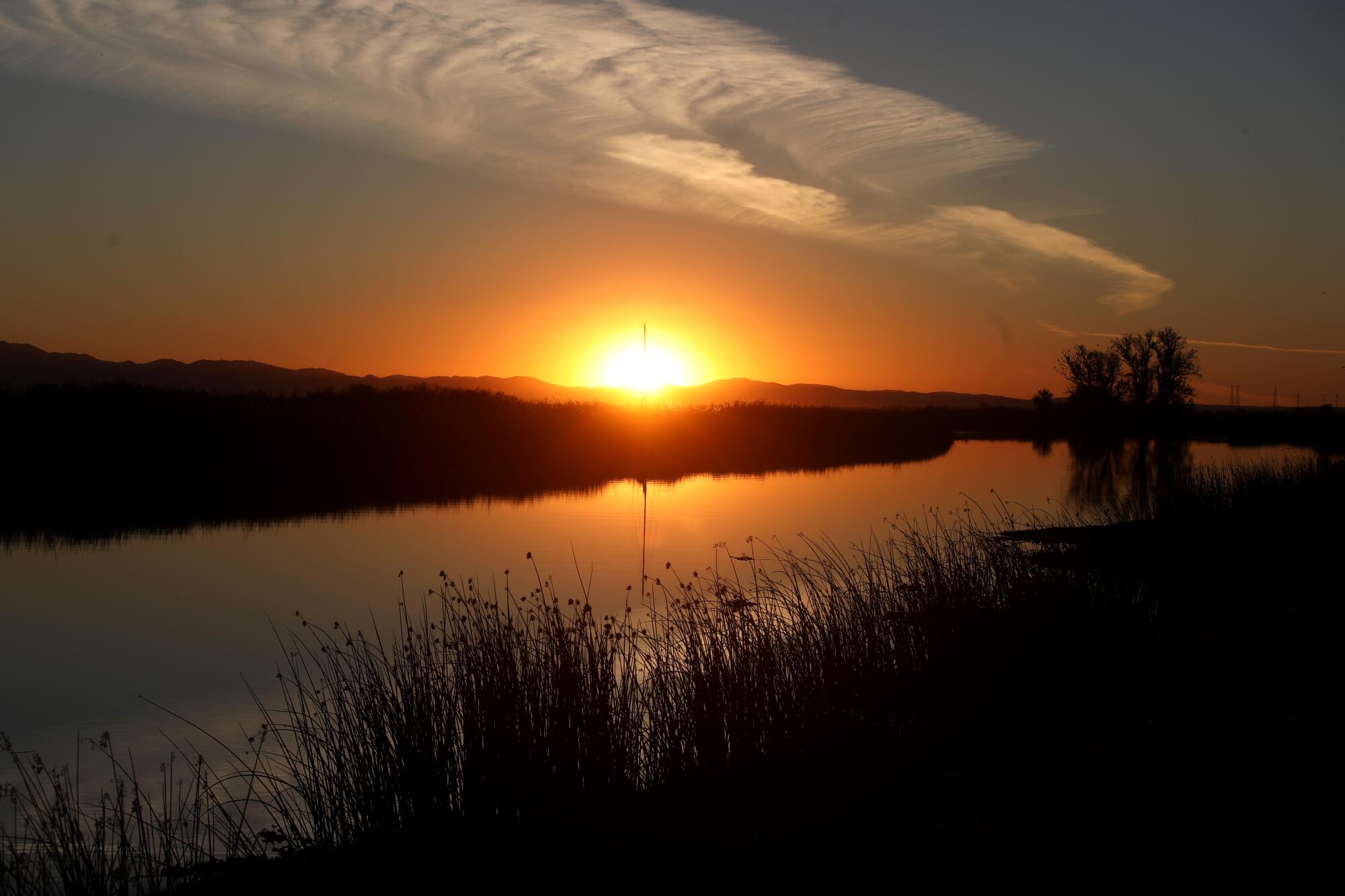
Environmental and fishing groups have condemned the agencies’ voluntary proposal as a backroom deal.
Studies have repeatedly found that the watershed’s ecological health can be restored, provided enough water is allowed to flow through the delta, said Jon Rosenfield, science director of the group San Francisco Baykeeper.
“There is plenty of water available for both human use and protection of our environment,” Rosenfield said. “But there is not enough water to do everything that everybody wants to do with the water, like make lots of money exporting almonds to the rest of the world, for instance, or in the urban environment, growing lush green lawns in a semi-desert.”
The debate over policy options coincides with an ongoing civil rights investigation by the federal Environmental Protection Agency. In August, the EPA accepted a complaint in which tribes and environmental justice groups accuse the State Water Board of discriminatory practices and mismanagement that they say have contributed to the delta’s ecological deterioration.
California legislators passed a water-saving bill banning the use of drinking water on decorative grass outside businesses and along streets.
The coalition of tribes and environmental groups — including the Shingle Springs Band of Miwok Indians, Winnemem Wintu Tribe and the groups Little Manila Rising and Restore the Delta — argue that out-of-date water quality standards have led to collapsing fish populations and worsening algae blooms.
The coalition said in a written statement that the voluntary agreements are “illegitimate” because they exclude tribes and affected communities, fail to provide adequate flows for fish, and would allow the proliferation of harmful algal blooms that create health concerns.
Cintia Cortez, a policy analyst for Restore the Delta, said the agreements are “an exclusionary process for tribes and environmental justice communities.”
“The communities we represent are being harmed by inadequate management of Bay-Delta flows,” Cortez said.
While state officials consider new water quality standards for the delta, other related debates focus on big infrastructure projects, including the Newsom administration’s controversial proposal to build a tunnel to transport water beneath the delta, and the plan to build Sites Reservoir in a valley north of Sacramento. By setting flow requirements for the Bay-Delta region, the eventual update of the water quality plan is expected to lay out constraints for those projects.
This year, populations of chinook salmon were so low that regulators shut down the fishing season along the coast. Environmental advocates have called for more stringent flow requirements to help populations recover.
Gary Bobker, program director of the Bay Institute, said that in 2017 the State Water Board detailed a path for setting new standards for the delta based on the best available science.
“But instead of acting quickly to execute that vision, it delayed for six years — years the collapsing estuary could ill afford — to accommodate the long drawn-out and ill-designed process by Governor Newsom and water districts to develop ‘voluntary agreements’ that ignore the science,” Bobker said.
The State Water Board is holding workshops and hearings on its draft report in October, November and December, and is accepting written comments until Dec. 15.

